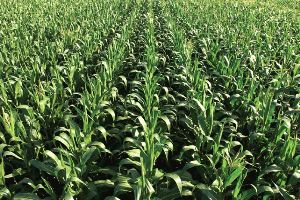Damaging Foliar Diseases Could Infect Young Indiana Crops

Young Indiana crops could be vulnerable to foliar diseases thanks to recent wet and humid weather conditons
Following weeks of rain that delayed corn planting in Indiana, humid weather has moved in, creating favorable conditions for the development of foliar diseases in young crops, according to a Purdue Agriculture News story.
Three foliar diseases, which if untreated could lead to reduced yields during harvest, have begun appearing in some Indiana fields according to Kiersten Wise, Extension Specialist for Agronomic Field Crop Diseases at Purdue University. Gray leaf spot, which is caused by a fungus, has appeared in the lower canopy of some vulnerable hybrids across the state. Northern corn leaf blight, also fungus-caused, has specifically been found in the lower canopy of several northern Indiana fields. Goss’s wilt, a bacterial disease, has been confirmed in plants grown for popcorn and in hybrid corn in the northeast part of the state.
Wise says, "Many fields across Indiana are currently at a younger growth stage than normal due to delayed planting and, therefore, may be at greater risk for yield loss due to disease development.
There are fungicides to treat foliar diseases such as gray leaf spot and northern corn leaf blight, which should be applied during the growth stage of tasseling to early silking for the best chance of prevention. However, Goss’s wilt, which is bacterial, will be resistant to these fungicides.
Indiana farmers should be conscious of emerging foliar diseases, specifically in young crops, thanks to wet and humid weather conditions. As indicated in the Purdue Agriculture News story, if these diseases are left untreated, reduced yields could be a result.